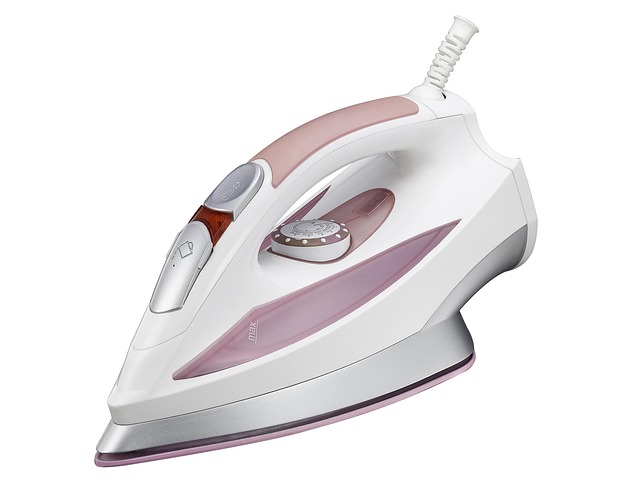GE dishwashers can experience performance issues like leaks or failure to clean properly due to clogged filters and spray arms, electrical faults, or issues with the drain hose. Regular maintenance such as cleaning filters and spray arms, checking for loose wires, and clearing blockages in supply lines and drain hoses is essential for preventing common problems. When troubleshooting, it's important to verify the dishwasher's connections to water and power sources, inspect the door latch, control panel or power switch, water inlet valve, and ensure smooth operation of the timer mechanism, drain valve, and garbage disposal connection. For leaks, check hoses, connections, and the door seal for damage or wear, and replace faulty parts like the water inlet valve while following safety precautions. Worn components such as the arm support, pump, and wash arms should be replaced to restore efficiency. To maintain long-term reliability, perform routine maintenance including clearing filters after each use, ensuring drain hoses are not kinked, performing a monthly vinegar cycle to prevent mineral buildup, and inspecting the door seal for wear. Addressing unusual noises may require tightening or replacing parts. By keeping up with these practices, you can extend your GE dishwasher's life, ensure it cleans effectively, and maintain a clean kitchen environment.
When it comes to ensuring your kitchen workflow remains smooth and efficient, addressing GE dishwasher issues promptly is key. Our comprehensive guide demystifies common malfunctions in GE dishwashers, offering straightforward solutions to keep your dishes sparkling clean without the hassle. From troubleshooting steps tailored for various models to targeted fixes for pesky water leaks, we equip you with the knowledge to diagnose and resolve these issues effectively. Additionally, we delve into maintenance strategies that will extend the life of your GE dishwasher, ensuring it operates at peak performance. Whether you’re facing a stubborn leak or preparing to replace worn components, this article serves as an indispensable resource for maintaining the reliability and functionality of your GE dishwasher.
- Common GE Dishwasher Issues and Solutions
- Step-by-Step Guide to Troubleshooting GE Dishwashers
- Diagnosing and Fixing Water Leaks in GE Dishwashers
- Replacing Worn-Out Components in GE Dishwashers
- Maintenance Tips for Long-Term GE Dishwasher Reliability
Common GE Dishwasher Issues and Solutions

GE dishwashers, like all appliances, can encounter various issues over time. Common problems include poor performance, such as inadequate cleaning or water leaks. When faced with ineffective cleaning, it’s often due to clogged filters or a damaged arm. Homeowners should regularly inspect and clean the filter and spray arm to ensure proper water circulation. Another frequent issue is water leaking from the dishwasher, which can be attributed to a variety of causes such as a worn-out gasket, faulty valve, or improper drainage. To address this, it’s essential to check the door seal for wear and tear, test the inlet valve for functionality, and verify that the standpipe and air gap are correctly installed and not obstructed. Additionally, issues with the dishwasher not starting or draining can arise from electrical problems or a clogged drain hose. Resolving these requires checking connections for loose wires or tripped circuits and clearing any blockages in the drain line. By identifying and addressing these common concerns promptly, GE dishwasher owners can maintain the efficiency and longevity of their appliance, ensuring a hassle-free clean-up experience. Regular maintenance and understanding the basics of troubleshooting can save time and prevent minor issues from escalating into larger, more costly repairs.
Step-by-Step Guide to Troubleshooting GE Dishwashers

1. When encountering issues with your GE dishwasher, a systematic approach to troubleshooting can help identify and resolve the problem efficiently. Begin by checking the basics: ensure the dishwasher is properly connected to both water and power supplies. Confirm that the water inlet valve is functioning correctly and that there are no kinks or blockages in the water supply lines. Next, inspect the door latch assembly and the latch mechanism to ensure they are free of debris and damaged parts that might prevent proper sealing and operation.
2. If the dishwasher isn’t starting, verify if the control panel or power switch is set correctly. For models with electronic controls, check for any fault codes displayed on the panel, which can guide you to the specific issue. Should the dishwasher fail to fill with water, investigate the water inlet valve and the timer mechanism. Clogs or malfunctions here can prevent water from entering the machine. If the dishes come out not clean, it could be due to poor spray arm operation or a blocked filter. Clean or replace the spray arm and filter to restore optimal performance. For issues with draining, inspect the drain hose for kinks and make sure it is properly connected to the garbage disposal or sink drain. Additionally, ensure the drain valve is functioning and not obstructed by food residue or mineral deposits. With these troubleshooting steps, you can often resolve common issues with your GE dishwasher without needing professional assistance.
Diagnosing and Fixing Water Leaks in GE Dishwashers

When addressing water leaks in GE dishwashers, it’s crucial to systematically identify and fix the source of the issue. A persistent drip or a pooling puddle beneath your appliance can be indicative of several potential problems. To diagnose the leak, start by inspecting the hoses and connections for any signs of wear, kinks, or loose fittings that may cause leaks. Ensure that the water inlet valve is functioning properly; a faulty valve can lead to continuous water flow even when the dishwasher cycle has concluded. Check the door seal as well, as a worn-out gasket can allow water to escape.
Once you’ve pinpointed the leak’s origin, the next step involves taking corrective action. A simple tightening of hose clamps or replacing a compromised rubber hose may resolve minor leaks. If the issue lies with the water inlet valve, it might need to be replaced entirely. This component regulates the flow of water into the dishwasher and can malfunction over time. For the door seal, assess whether it can be repositioned or requires a full replacement to ensure a watertight fit. In all cases, shut off the dishwasher’s water supply and unplug the appliance before beginning any repair to avoid electric shock or further water damage. With these steps, you can effectively address water leaks in GE dishwashers, ensuring your kitchen stays dry and your dishwasher operates efficiently.
Replacing Worn-Out Components in GE Dishwashers

When a GE dishwasher starts to show signs of wear and your clean-up routine becomes less hassle-free, it may be time to replace some components. Over time, key parts such as the arm support, pump, or wash arm can deteriorate, affecting the dishwasher’s performance. For instance, if you notice water leaks or dirty dishes after a cycle, the seals around the door or the filter might need attention. Similarly, if there’s a lack of proper water flow, it could indicate an issue with the water inlet valve or worn-out wash arms that distribute soap and water throughout the machine.
Replacing these components can significantly enhance your GE dishwasher’s functionality. The process typically involves shutting off the power and water supply, removing the affected part, and installing a new one. It’s important to follow the manufacturer’s guidelines or consult a service manual for specific models, as some components may vary in size or function. By doing so, you can ensure that your dishwasher operates efficiently and returns to its role as an indispensable appliance for maintaining spotless dishware and kitchen cleanup.
Maintenance Tips for Long-Term GE Dishwasher Reliability

For long-term reliability of your GE dishwasher, routine maintenance is key. Regularly cleaning the filter after each use prevents food particles from accumulating and causing blockages that can affect performance. Additionally, ensure the dishwasher’s drain hose is not kinked or sitting in a puddle, as this can impede water flow and lead to standing water in the dishwasher. It’s also wise to run an empty cycle with a cup of white vinegar monthly to remove mineral deposits that can impair the machine’s spray arms.
To maintain optimal function, inspect and replace the detergent dispenser if necessary. The rubber seal around the door should be checked frequently for signs of wear or damage, as this is crucial for maintaining the integrity of the dishwasher’s seal against leaks. Lastly, take note of any unusual noises during operation, which could indicate a need to tighten or replace components like the lower spray arm or pump assembly. Regular maintenance not only extends the life of your GE dishwasher but also ensures that it continues to provide efficient and effective cleaning for years to come.
maintenance and repair of GE dishwashers are straightforward processes, as outlined in this guide. By addressing common issues like leaks and worn-out parts, you can ensure your appliance functions optimally. Regular upkeep, as suggested in our maintenance tips, will help prolong its lifespan and maintain peak performance for hassle-free clean-up. With these practical solutions at hand, your GE dishwasher will serve you well for years to come.
